The nurses' general
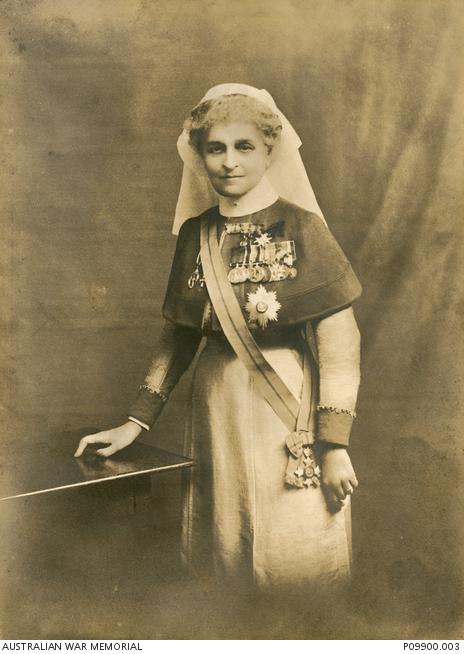
Dame Maud McCarthy was one of the most highly decorated women’s leaders of the First World War.
The Matron-in-Chief of the British Expeditionary Force in France and Flanders from 1914 to 1919, McCarthy sailed on the first troop ship to leave England.
She arrived in France on 12 August 1914 and proved to be not only an inspiring and indefatigable leader, but also an undaunted and highly-skilled administrator.
She remained in charge for the entire war and became known as the nurses’ general. What many do not know is that McCarthy was Australian.
“She was an outstanding woman of her time,” her great-niece Kate Sevier said.
“She took on enormous challenges under difficult conditions, and was an outstanding leader, a great role model and a pioneer in the field of nursing and military leadership.
“[She] dedicated her life to military nursing services.”
Kate Sevier first heard about her great-aunt when her mother, Nell McCarthy, read a passage from Martin Boyd’s Day of my delight. The book made reference to his mother’s cousin, Maud McCarthy, who had become a nurse and held the “highest administrative position in the 1914 war”.
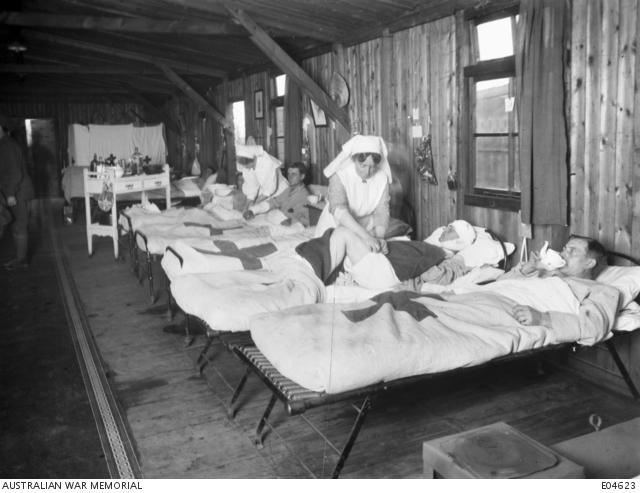
Near Steenvoorde, France. 30 November 1917. A ward in the 2nd Australian Casualty Clearing Station near Steenvoorde. Most of the patients treated were wounded in the fighting of the Third Battle of Ypres.
“Mum then told me that Maud McCarthy was my father’s aunt, my great-aunt,” Sevier said.
“My father – Elwin Justin McCarthy – was in RAAF Squadron 13 in World War Two and died when I was 11 years old in 1959 so I did not recall any family discussion about her.
“I was surprised and intrigued to know why our family had not talked about this or raised it in conversation before.”
Sevier’s grandfather, Jack Edmond McCarthy, was one of McCarthy’s younger brothers and had served with the New Zealand forces on Gallipoli.
“He wrote a beautiful letter from Anzac Cove to my father who would have been six at the time,” she said. “His field message book and letters were in a box in the sea chest, [but] I did not really know anything about Maud’s career, and [I] wonder why my mother did not tell us about her remarkable service.
“That quote about Maud in Martin Boyd’s book had sown a seed of intrigue for me to find out more later.”
Sevier would learn more about her great-aunt’s extraordinary achievements when she began researching her McCarthy family history.
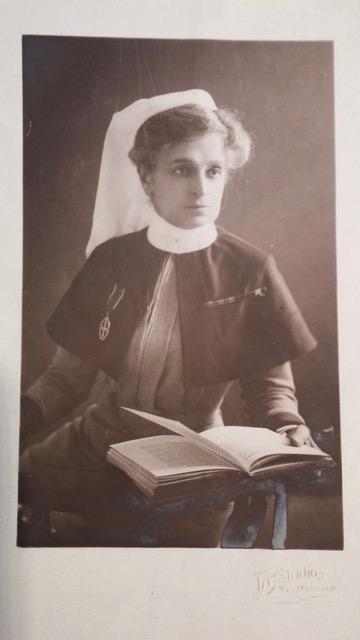
Dame Maud McCarthy. Photo: From a Private Collection. Date unknown. Courtesy Juliette Wilson and her exhibition – The Nurses’ General: Dame Maud McCarthy – at Oxford House in Bethnal Green, London
Dame Maud was born Emma Maud McCarthy on 22 September 1859 in Paddington, Sydney.
The eldest child of Sydney solicitor William McCarthy and his wife Emma, she gave up the chance to attend Sydney University to help her mother rear her ten brothers and sisters after her father died in 1881.
She moved to England when she was 30, and began her general nursing training at London Hospital, Whitechapel, listing her occupation as “companion” and her age as 28.
When war broke out in South Africa, McCarthy was one of six sisters selected from London Hospital by Princess Alexandra to go to South Africa to tend to wounded soldiers.
She served with distinction from 1899 until 1902 and was awarded the Royal Red Cross, the Queen’s Medal and the King’s Medal. Upon her return to England in 1902, she was also awarded a special decoration from Queen Alexandra.
She then assisted with the formation of Queen Alexandra's Imperial Military Nursing Service and was promoted to matron, serving at several large military hospitals before becoming Principal Matron at the War Office in 1910.
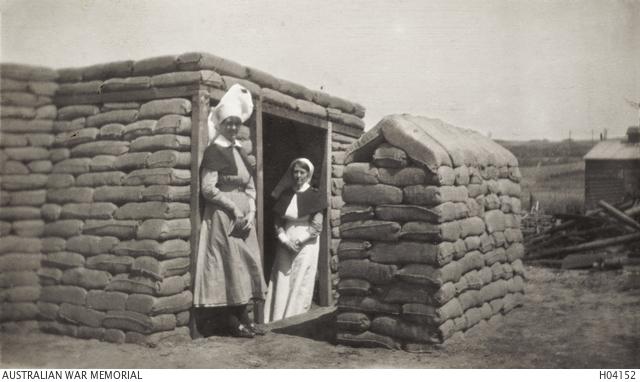
Wimereux, France. c. 1916. Two nursing sisters from No 2 Australian General Hospital at the entrance to the nurses' dugout.
When the First World War broke out in August 1914, she was summoned to duty in France and Flanders.
Shortly afterwards, she was appointed Matron-in-Chief of the British Expeditionary Force, taking charge of the whole area from the English Channel to the Mediterranean, wherever British and allied nurses worked.
When she arrived in France in 1914, McCarthy was in charge of some 500 nurses, with a tiny staff, including “one highly effective assistant”, Sister Isabelle Barbier, and a couple of typists.
By 1918, McCarthy was in charge of more than 8,000 nurses and volunteers from Britain, Australia, Canada, the Dominions, and America, and was responsible for all nursing operations in the field.
McCarthy was said to have been the only head of a department in the British Expeditionary Forces who remained in her original post throughout the war.
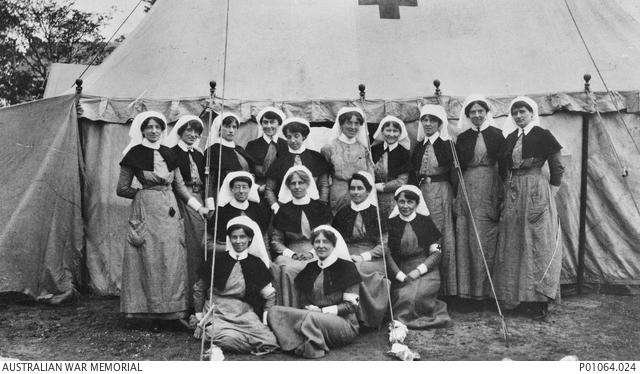
A group portrait of nursing staff of the Australian Voluntary hospital at St Nazaire, France in 1914.
Modest and unselfish, McCarthy dedicated her life to the provision of exemplary care. She was made a Dame of the British Empire in 1918 and later awarded the Florence Nightingale Medal, the highest international distinction a nurse can receive.
She was also awarded a Bar to the Royal Red Cross, the Belgian Medaille de la Reine Elizabeth, and the French Légion d'honneur and Medaille des Epidémies.
When she left France in August 1919, representatives from the French Government and medical services were there to see her off, while her nurses filled her cabin with flowers and sang “For she’s a jolly good fellow” on the quayside.
After the war, she served as the Matron in Chief of the Territorial Army Nursing Service and would often be stopped and thanked by grateful soldiers and former patients in the street.
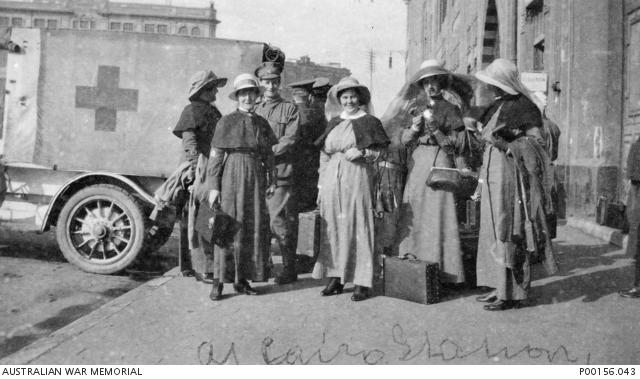
Nurses of the 2nd Australian General Hospital at the railway station in Cairo, Egypt, in 1916 waiting to leave for France.
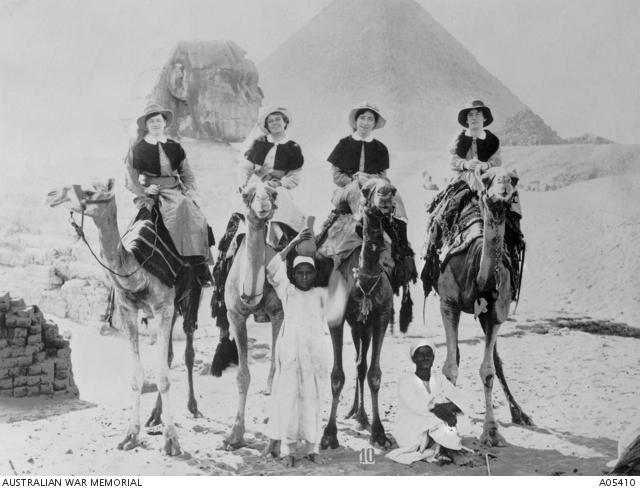
Australian Army Nursing Service sisters in Egypt in 1915.
When Australia sent a contingent of nurses to attend the king’s coronation in 1937, the elderly Dame Maud met them at St Pancras Station. The Melbourne Argus reported: “She tottered from the crowd with the aid of a companion and cried, ‘I’m glad to see you again, girls!’”
Dame Maud McCarthy died at her home in Chelsea, London, on 1 April 1949 and was buried in Chelsea Cemetery. On her death, The Times stated: “All who came to her for help, comfort, or advice found a ready response.”
Today, a Blue Plaque by English Heritage marks her former home at 47 Markham Square and she has been recognised in an exhibition – The Nurses’ General: Dame Maud McCarthy – at Oxford House in Bethnal Green, London.
The exhibition, which runs until 12 January 2020, was prepared by Juliette Wilson, an experienced film researcher and descendant of Dame Maud’s, featuring images from Australia, New Zealand, the Library of Congress, Imperial War Museum and private collections.
“[Dame Maud] was a pioneer in her field,” Sevier said. “A remarkable Australian woman … who was ahead of her time.”